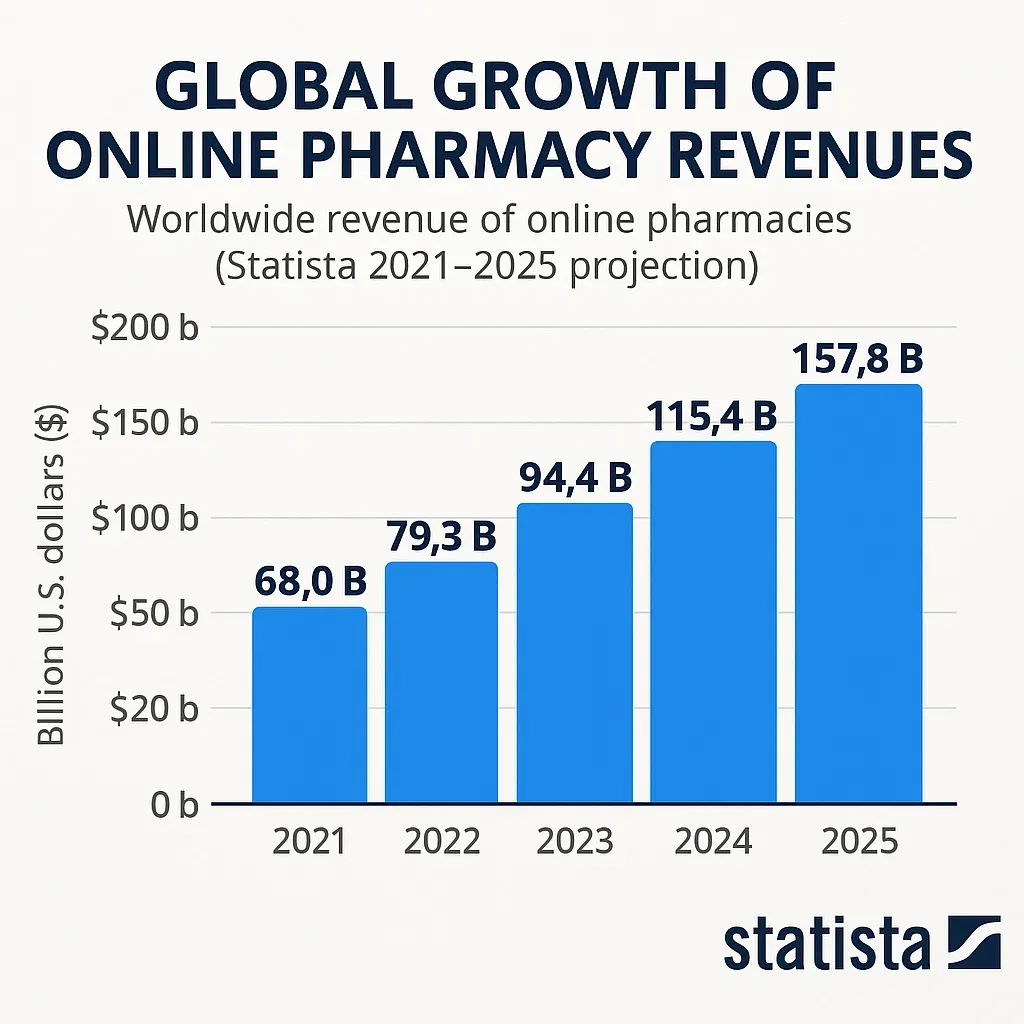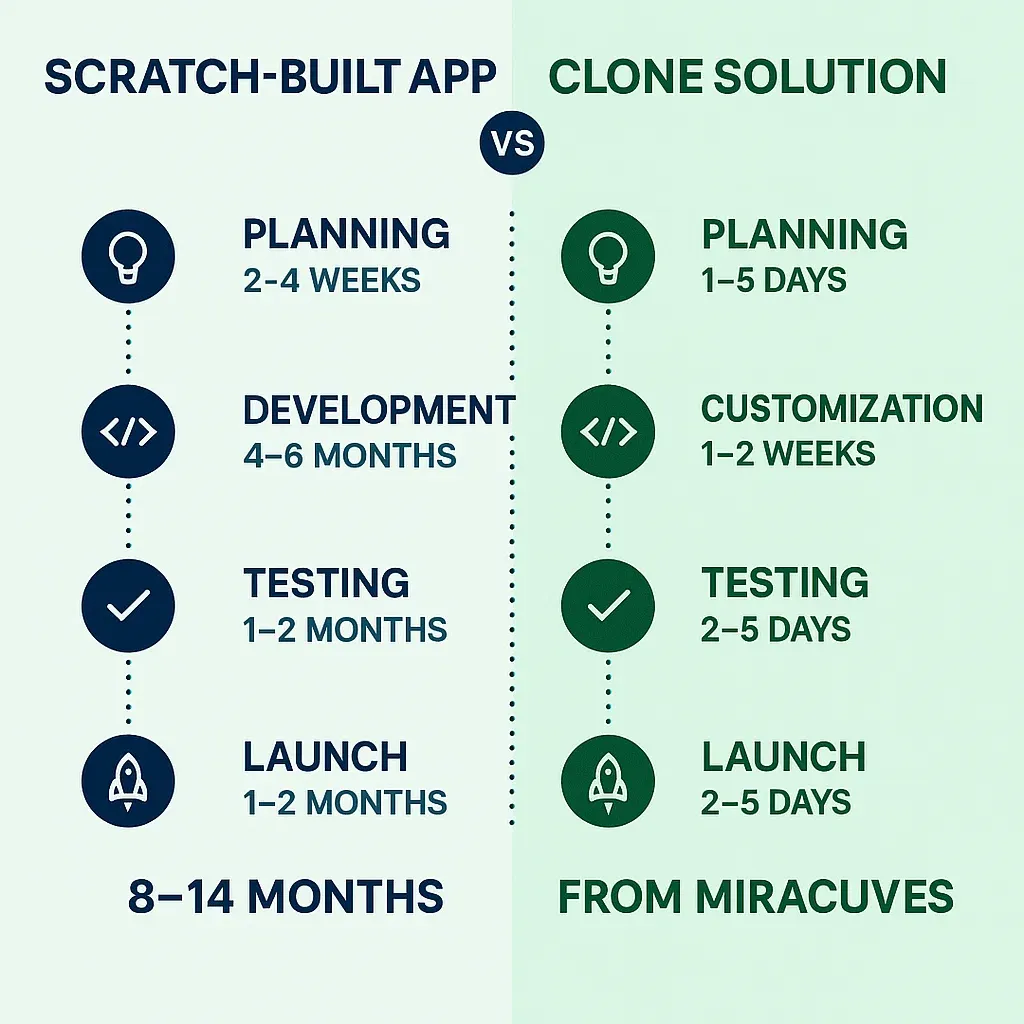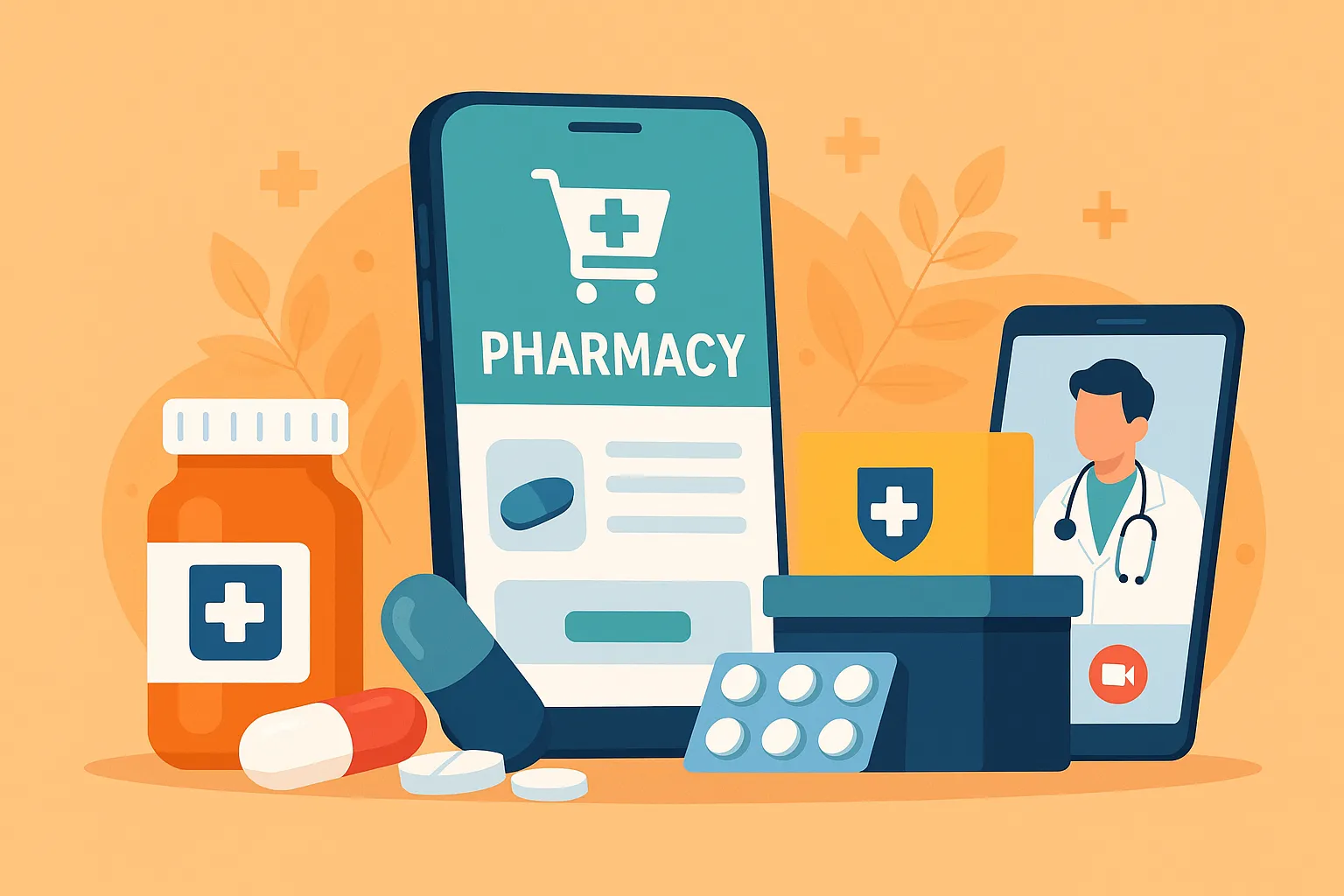As the healthcare landscape undergoes digital disruption, pharmacy marketplace apps are emerging as one of the most promising niches for tech-savvy entrepreneurs. In 2025, the convergence of health-conscious consumers, on-demand expectations, and scalable tech stacks makes this category ripe for innovation.
From prescription refills to telehealth integrations, the pharmacy marketplace segment is seeing a surge in demand. Global digital health investments continue to pour in, and startups are capitalizing on unmet needs across urban and semi-urban demographics. If you’re a startup founder, entrepreneur, or digital agency looking for your next winning idea, a Pharmacy Delivery Solution presents a rare mix of impact and profitability.

Why Pharmacy Marketplace Apps Are a Hot Opportunity in 2025
The pharmacy marketplace industry is expected to hit over $177 billion globally by 2025, according to Statista. More than 70% of consumers now prefer digital channels for managing medication needs, from ordering to refilling prescriptions. This shift in consumer behavior is largely fueled by rising smartphone penetration, aging populations, chronic disease prevalence, and the normalization of telehealth.
CB Insights reports that healthtech investments topped $29 billion globally in 2024, with a strong tilt toward B2C pharmacy and wellness delivery apps. From AI-driven drug recommendations to 30-minute hyperlocal delivery, startups have room to differentiate and scale fast.
Success stories like 1mg (acquired by Tata), NetMeds (acquired by Reliance), and Pharmeasy prove the demand is real. But gaps still exist—especially in Tier 2/3 markets, elderly-focused solutions, and insurance-integrated pharmacy flows.
Read more: How to Market a Pharmacy Marketplace Successfully After Launch
Top Profitable Pharmacy Marketplace App Ideas to Launch in 2025
1. On-Demand Prescription Delivery App
This app allows users to easily upload their prescriptions, connect with licensed pharmacists for verification, and receive medications via same-day delivery. It solves the convenience problem for chronic care patients and those with mobility challenges. With options for B2B tie-ins and memberships, it ensures recurring revenue and local pharmacy collaboration. It’s ideal for urban markets demanding speed and reliability.
- Monetization: Delivery fees, membership plans, B2B tie-ups with clinics
- Why it works: Aligns with instant delivery expectations and supports chronic patients.
2. Telepharmacy Consultation Platform
This platform bridges the gap between pharmacists and patients through secure video consultations. Users can receive guidance, renew prescriptions, and order medicines from a single interface. It reduces dependency on in-person visits and builds trust in medication accuracy. Ideal for remote areas and busy professionals, the model thrives on consult-based monetization and insurance partnerships.
- Monetization: Pay-per-consult, subscription packages, insurance integrations
- Why it works: Reduces wait times and adds trust in medication guidance.
3. Elderly Medication Management App
Tailored for seniors and caregivers, this app provides pill reminders, auto-refill tracking, and alerts for missed doses. It promotes adherence to prescriptions and ensures peace of mind for families. With senior-focused UI, voice prompts, and scalable plans, it’s a retention-friendly solution. A growing elderly population makes this segment increasingly viable for digital innovation.
- Monetization: Premium plans for families, eldercare partnerships, pharma sponsorships
- Why it works: Taps into a high-retention, underserved segment.
4. B2B Pharmacy Fulfillment App
Designed for small and mid-sized pharmacies, this app connects retailers directly with suppliers and wholesalers. It streamlines procurement, reduces stockouts, and automates order tracking. With subscription-based analytics and featured listings, it’s a SaaS-ready platform solving supply chain bottlenecks. A must-have for under-digitized pharma networks.
- Monetization: Commission per order, featured listings, SaaS subscription for analytics
- Why it works: Solves real inefficiencies in the pharma supply chain.
5. Insurance-Integrated Medicine Ordering App
This app empowers users to order medications with real-time insurance coverage checks and co-pay calculators. It simplifies the complex claims process and improves transparency. Integration with insurance APIs adds efficiency and eliminates user confusion. It’s a game-changer for regulated markets where affordability and access are primary barriers.
- Monetization: Insurance API partnerships, affiliate upsells, freemium model
- Why it works: Simplifies complex claims process, a major user friction point.
6. Ayurvedic & Wellness Pharmacy App
Focused on natural healing, this marketplace showcases curated ayurvedic remedies, supplements, and wellness kits. It appeals to health-conscious consumers seeking alternatives to synthetic drugs. With influencer tie-ins, brand partnerships, and subscription boxes, it taps into the booming wellness economy. Trust and curation are its biggest value drivers.
- Monetization: Affiliate sales, subscription boxes, health brand partnerships
- Why it works: Wellness is booming, and consumers want curated, trusted product access.
7. Pet Pharmacy Marketplace App
This app delivers pet medicines, supplements, and prescription items right to pet owners’ doorsteps. Designed for convenience and niche targeting, it offers repeat deliveries and vet-approved recommendations. With rising pet ownership and healthcare awareness, the market is ripe for disruption. It’s a high-margin, low-competition digital opportunity.
- Monetization: Product markup, subscription deliveries, sponsored vet clinics
- Why it works: Pet care spending is surging; niche competition is still low.
What Makes an App Profitable in the Pharmacy Marketplace Niche?
Pharmacy apps that thrive usually share these common traits:
- Recurring revenue: via subscriptions, refill alerts, or memberships
- High retention: due to critical health dependency and consistent usage
- Low operational overhead: when using third-party logistics and digital prescriptions
- Scalable user acquisition: through doctor referrals, wellness influencers, or clinic tie-ins
Most importantly, speed to market matters. Building from scratch can take 6–12 months and $100k+. Clone app development solutions—like those from Miracuves—can shave 60% off your cost and go live in weeks, not months.

Read more: Smart Revenue Models for Your Pharmacy Marketplace
Cost to Build a Pharmacy Marketplace App in 2025
Here’s what you can expect:
| App Complexity | Estimated Cost Range |
| Basic MVP (Single platform) | $15,000 – $25,000 |
| Mid-tier App (iOS + Android + Admin) | $30,000 – $50,000 |
| Advanced Platform (Multi-vendor, AI, Insurance API) | $70,000 – $120,000 |
Launch Your Pharmacy Marketplace App in Just 3–6 Days — Go Live with Miracuves from $2,500 to $3,000!
Cost Factors:
- Frontend UI/UX complexity
- Custom backend logic (e.g., e-prescription parsing, insurance checks)
- Real-time delivery tracking
- Regulatory compliance & data encryption
- Integration with pharmacy POS systems
Why clone apps win: With prebuilt modules and HIPAA-ready workflows, white-label clones from Miracuves save time, effort, and money—without compromising customizability.
Read more: A Complete Cost Analysis for Developing an E-Pharmacy Platform
Tips for Founders to Launch a Successful Pharmacy Marketplace App
- Start with an MVP: Test core flows like prescription upload, ordering, and payments before scaling.
- Invest in UI/UX: Healthcare users expect intuitive navigation—designing for elderly and less tech-savvy users can give you an edge.
- Validate the Market Early: Launch beta access to clinics, pharmacists, or eldercare homes to test demand.
- Use a Scalable Backend: Pick a tech stack that can handle thousands of users and securely store health data.
- Plan a Post-launch Marketing Push: Include health influencers, SEO for longtail queries like “refill medicine near me,” and clinic partnerships.
Conclusion
The most profitable pharmacy marketplace apps to launch in 2025 are the ones solving real medication access problems—with speed, personalization, and trust. Whether it’s eldercare meds, pet wellness, or e-consult enabled refills, the demand is booming, and the space is far from saturated.
As a founder, the key lies in acting fast, validating early, and launching lean. With white-label pharmacy app clone solutions from Miracuves, you don’t have to spend a fortune or wait a year to break into this high-growth market.
At Miracuves, we help innovators launch high-performance app clones that are fast, scalable, and monetization-ready. Ready to turn your idea into reality? Let’s build together.
FAQs
Q:1 How much does it cost to build a pharmacy marketplace app?
The cost to build a pharmacy marketplace app with Miracuves is approximately $2,500 to $3,000, with a 3–6 day Go-Live turnaround.
Q:2 What features should a successful pharmacy app include?
Prescription upload, search & filter, e-consult, reminders, and insurance integration.
Q:3 Is it better to build from scratch or use a clone solution?
Clone solutions are faster, more cost-efficient, and easily customizable—ideal for MVP launches.
Q:4 Can I integrate telehealth with my pharmacy app?
Yes, especially with Miracuves’ clone frameworks that support video call modules and eRx handling.
Q:5 Do pharmacy apps need special compliance like HIPAA?
Absolutely. Handling personal health info requires encryption and country-specific compliance.
Q:6 How soon can I launch with a white-label clone?
With Miracuves, you can go live in as little as 3–4 weeks with a fully functional, branded app.
Related Articles:








